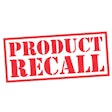With the recent petfood recall fresh on the mind of the industry, food safety testing is a topic of interest to just about everyone involved in petfood production. Petfood Industry asked several analytical laboratories their opinion on the top safety issues today in petfood production. We also asked them to give us some insight into the most current testing technologies available.
According to Lars Reimann, chief scientific officer for Eurofins Scientific Inc., three main groups of top ingredient safety issues face petfood manufacturers today. These issues are:
Adulteration/mislabeling (GMOs, diluting more expensive products with less expensive products, natural/organic versus regular products);
Known toxic residues (allergens, heavy metals, pesticides, drug residues, dioxins, microbial contamination); and
Unknown residues (melamine, acetaminophen, bioterrorism toxins, unknown toxic by-products formed during the manufacturing process such as heat-generated toxins like acrylamide, benzene, furans and 3-monochloropropane-1,2-diol).
Global sourcing expands the issues
Reimann notes that the challenge to the industry is to ensure that the ingredients/products it buys at a good price are sufficiently safe for their intended use. Global sourcing has expanded the issues that need to be considered, as well as reduced the responsibility/trust factor between buyer and seller. However, technologies have also evolved that allow regulators and others to test for an ever-increasing number of residues present with increasingly lower detection limits. The real challenge is to educate the consumer, regulators and the industry itself on what constitutes "real" hazards versus "perceived" hazards, he says.
Reimann believes there are improvements continuously being made on the analytics front. "However, the scope of compounds of concern seems to grow as fast (or faster) than the improvements in analytical instrumentation and processes," he says.
France and Germany: similar/different issues
Outside the US, perception of the top ingredient safety issues facing manufacturers differs slightly. Michele Lees of Eurofins in France notes that the most pressing issues include adulteration of ingredients; external contaminants; accidental contamination from dioxins, etc.; naturally occurring contaminants (or contaminants formed from nontoxic ingredients); mycotoxins; and toxic chemicals formed by reaction of nontoxic ingredients (benzene, furan).
According to Werner Nader of Eurofins in Germany, ingredient scandals in the feed industry over the past decade have shadowed the petfood industry in that country. Genetically modified ingredients (a politically charged issue in Europe) in petfood are also quite commonly seen due to cross-contamination at the supplier. Because of the common supply chain for ingredients for feed and petfood, strict controls on the supply side have to be maintained, he says.
Mycotoxins still play a role
Dr. John Richard, a consultant for Romer Labs, sees mycotoxins as a major concern for most petfood manufacturers across the country and internationally. He notes that most petfood companies test for aflatoxins; however, most of them test every ingredient, and that is not necessary as aflatoxins do not occur in all ingredients. "Therefore, many companies are wasting money testing for these mycotoxins," he says.
Knowing what tolerance levels exist is important, and guidance is available from the US Food and Drug Administration for the major mycotoxins relative to levels of concern in petfood. "Regarding mycotoxin testing, I encourage companies to put some on the suppliers of the ingredients to test and certify that the ingredient contains no detectable, or at least acceptable (at or below the tolerance levels), levels of specified mycotoxins," he notes.
Richard indicates that there are many studies ongoing at present to reduce the levels of mycotoxin contamination in the field. These are most specifically pointed at reducing the levels of aflatoxins in commodities through genetic means (biocontrol and breeding). There are some very rapid, accurate and reliable tests on the market today that allow for testing of a number of mycotoxins within a few minutes, he says.
There are new tests being developed all the time by test kit manufacturers and the effort is to make them as fast as possible but not lose accuracy and reliability, according to Richard. The most recent developments in tests for mycotoxins include lateral flow tests. These tests are rapid and most are semi-quantitative, whereby a cutoff value is associated with the test and running the test on a sample will tell you if it is above or below that cutoff level, he notes.
Monitoring quality is an ongoing process
Patricia Jackson, business development manager, diagnostics for VICAM, realizes that in today's global marketplace, ingredient suppliers face the challenge of providing a consistent and traceable supply of ingredients that will meet the standards of a diverse market. She says that petfood manufacturers do a "fantastic job of monitoring the quality of their ingredients and finished products," so the most likely source of safety issues could be from unexpected or unintended components added to an ingredient prior to its delivery.
New technologies and new applications for existing technologies are rising to meet the need for more comprehensive screening of raw ingredients, according to Jackson. Near-infrared spectroscopy (NIR), the electronic nose and high-performance liquid chromatography (with mass spectrometry for increased sensitivity and specificity) are just a few she mentions. Each of these technologies offers advantages in detecting undesirable or foreign components in a feed ingredient. In addition, rapid technologies make it possible to screen ingredients as they arrive at the plant.
Audit programs are key
Dr. Scott Brooks, chief operating officer for Food Safety Net Services, recognizes that robust quality assurance programs to verify the quality and safety of ingredients are of critical importance in the safety of petfoods. According to Brooks, these programs, if executed with skill, address ingredient safety issues systematically rather than attempting to tackle individual issues (e.g., melamine). "Petfood companies need to ensure microbial, chemical and physical specifications are set for all ingredients and establish a program to monitor incoming ingredient quality. The programs should include requirements for certificates of analysis with incoming shipments and, importantly, a sampling and testing program to verify critical specification parameters," he says.
Analytical companies continue to improve turnaround times for results for both chemical and microbial contaminants, according to Brooks. Gene-based assays for microbes are speeding results and will improve with development of DNA microarrays and benefit from growth of nanotechnology applications. In addition to advanced instrumentation capabilities, lateral flow tests will continue to be developed to provide practical, rapid screening for chemical and microbial contaminants, he notes.



.png?auto=format%2Ccompress&fit=crop&h=167&q=70&w=250)












